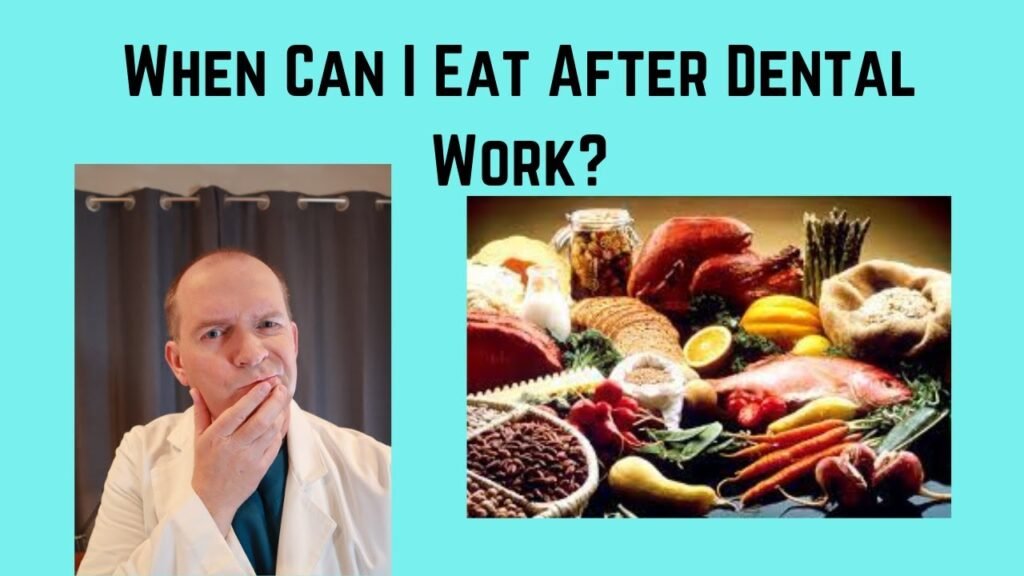Post-Extraction Eating: When Can I Eat?

After undergoing a tooth extraction, many patients are left wondering, When can I eat? This common question often arises due to concerns about disrupting the healing process or causing discomfort. In this article, we will delve into the recommended timeline for eating after a tooth extraction, as well as provide tips on what foods to avoid and how to ensure a smooth recovery. Stay tuned to learn all you need to know about post-extraction dietary guidelines.
How quickly can I consume food following a tooth extraction?
After a tooth extraction, it is recommended to wait about an hour before eating anything. During this time, you can remove the gauze sponges and choose soft foods to avoid irritation. It's important to avoid hot foods, drinks, and using straws for at least the first 24 hours to promote proper healing and avoid any complications. Remember to listen to your body and take it easy as you start to reintroduce regular eating habits.
Should I eat with gauze in my mouth after getting a tooth extraction?
After a tooth extraction, it is important to keep the gauze pad in place over the surgical area for about 45 minutes. This will help to control the bleeding and promote healing. Once you are ready to eat or drink something soft, such as a milkshake or smoothie, you can remove the gauze. Remember to replace the gauze as needed after eating or drinking.
Eating with gauze in your mouth after a tooth extraction is not recommended. It is best to remove the gauze before eating to avoid any potential choking hazards. Once you have finished your meal, you can gently rinse your mouth with warm salt water to help clean the area and promote healing. Remember to replace the gauze after eating to continue controlling the bleeding.
To ensure a smooth recovery after a tooth extraction, it is important to follow your dentist's instructions carefully. Keep the gauze pad in place for the recommended time, and remove it before eating or drinking. Remember to replace the gauze as needed to help control bleeding and promote healing. If you have any concerns or experience excessive bleeding, contact your dentist immediately for further guidance.
Is it safe to eat while my tooth extraction is still bleeding?
If your tooth extraction is still bleeding, it is important to be cautious about what you eat. Stick to soft or liquid form foods for at least the first 24 hours after the surgery. Avoid anything that requires vigorous chewing, as this can disrupt the healing process and lead to more bleeding. Hard or crunchy foods should be avoided as well, as they can further traumatize the extraction site. Additionally, refrain from consuming hot liquids, as they can dissolve the blood clot and prolong the bleeding. It's best to give your mouth time to heal properly before returning to a regular diet.
Navigating Your Post-Extraction Diet
After undergoing a tooth extraction, it is crucial to follow a post-extraction diet to promote healing and prevent complications. Opt for soft foods like yogurt, mashed potatoes, and smoothies to avoid irritating the extraction site. Additionally, avoid spicy, hot, or crunchy foods that can cause discomfort or disrupt the healing process. By carefully navigating your post-extraction diet, you can ensure a smooth and speedy recovery.
Optimizing Recovery with Smart Food Choices
Optimizing your recovery after a workout or injury is crucial for maintaining peak performance and overall health. By making smart food choices, you can enhance the body's natural healing process and accelerate recovery time. Incorporating nutrient-dense foods like lean proteins, whole grains, fruits, and vegetables can provide the essential vitamins and minerals needed for tissue repair and muscle recovery. Additionally, staying hydrated and consuming anti-inflammatory foods such as fatty fish and nuts can help reduce inflammation and promote faster healing.
To further optimize recovery, consider timing your meals and snacks strategically to support your body's recovery process. Consuming a balanced meal or snack containing carbohydrates and protein within 30 minutes to an hour post-exercise can replenish glycogen stores and kickstart muscle repair. Including sources of antioxidants like berries, dark leafy greens, and green tea can also help combat oxidative stress and support overall recovery. By making conscious and informed food choices, you can maximize your body's recovery potential and bounce back stronger than ever.
The Ultimate Guide to Eating After a Tooth Extraction
Are you unsure of what to eat after a tooth extraction? Look no further than this ultimate guide for all the answers you need. After a tooth extraction, it's important to stick to soft foods that are easy to chew and won't irritate the extraction site. Try options like yogurt, mashed potatoes, and smoothies to nourish your body while allowing your mouth to heal. Avoid crunchy or hard foods, as well as spicy or acidic items that could cause discomfort. By following these guidelines, you can ensure a smooth and speedy recovery after your tooth extraction.
In addition to choosing soft, gentle foods, it's also important to stay hydrated and maintain good oral hygiene. Drink plenty of water and avoid using straws, as the suction can disrupt the blood clot that forms in the extraction site. Be sure to gently rinse your mouth with salt water or a prescribed mouthwash to keep the area clean and reduce the risk of infection. By following these simple tips and sticking to soft, nourishing foods, you can make the recovery process after a tooth extraction as smooth and comfortable as possible.
Once you have had a tooth extraction, it is important to follow your dentist's instructions for recovery. Typically, you can start eating soft foods within a few hours of the procedure and gradually progress to firmer foods as you heal. Remember to avoid hard or crunchy foods that can irritate the extraction site. By following these guidelines, you can ensure a smooth and speedy recovery process.